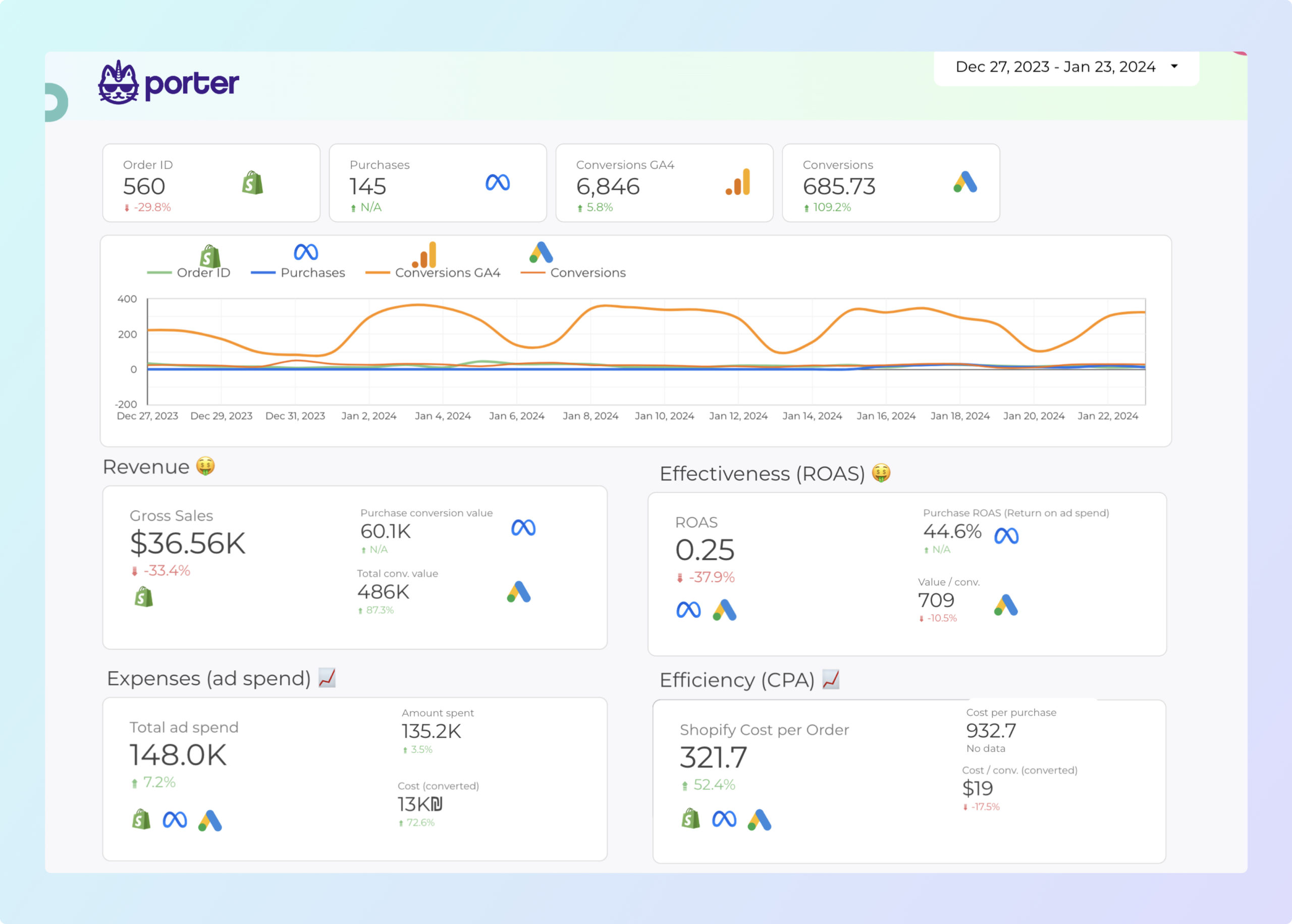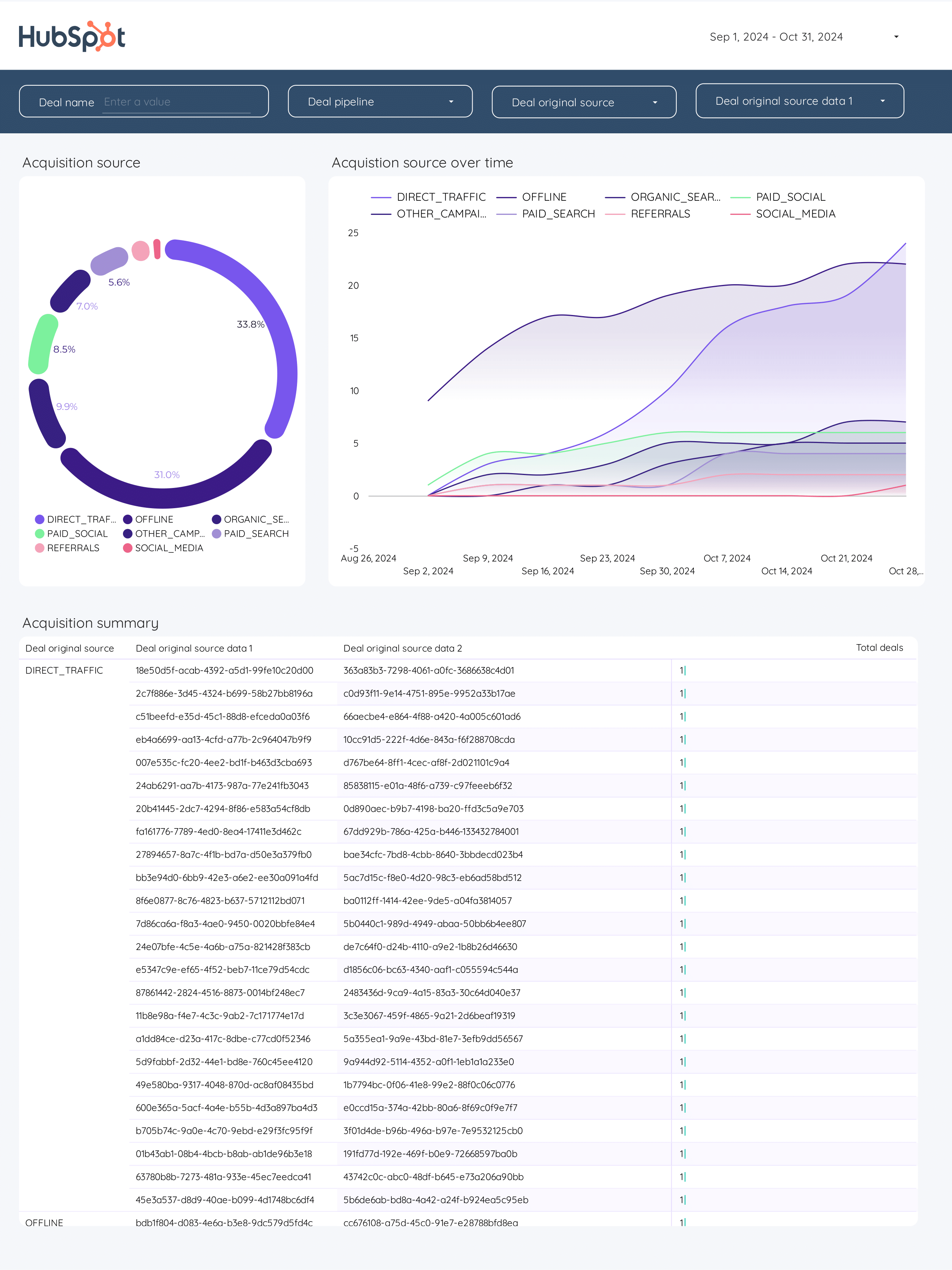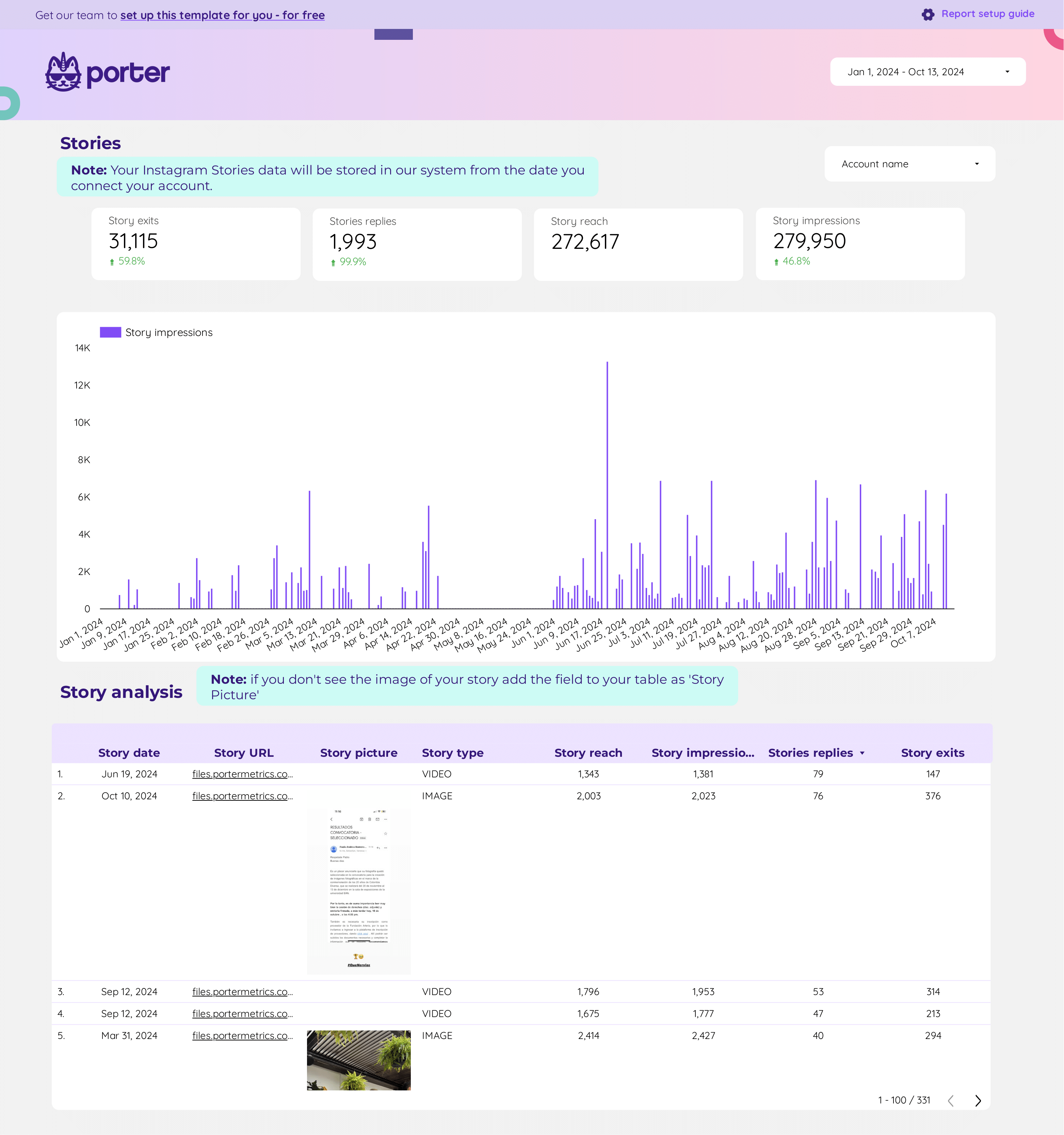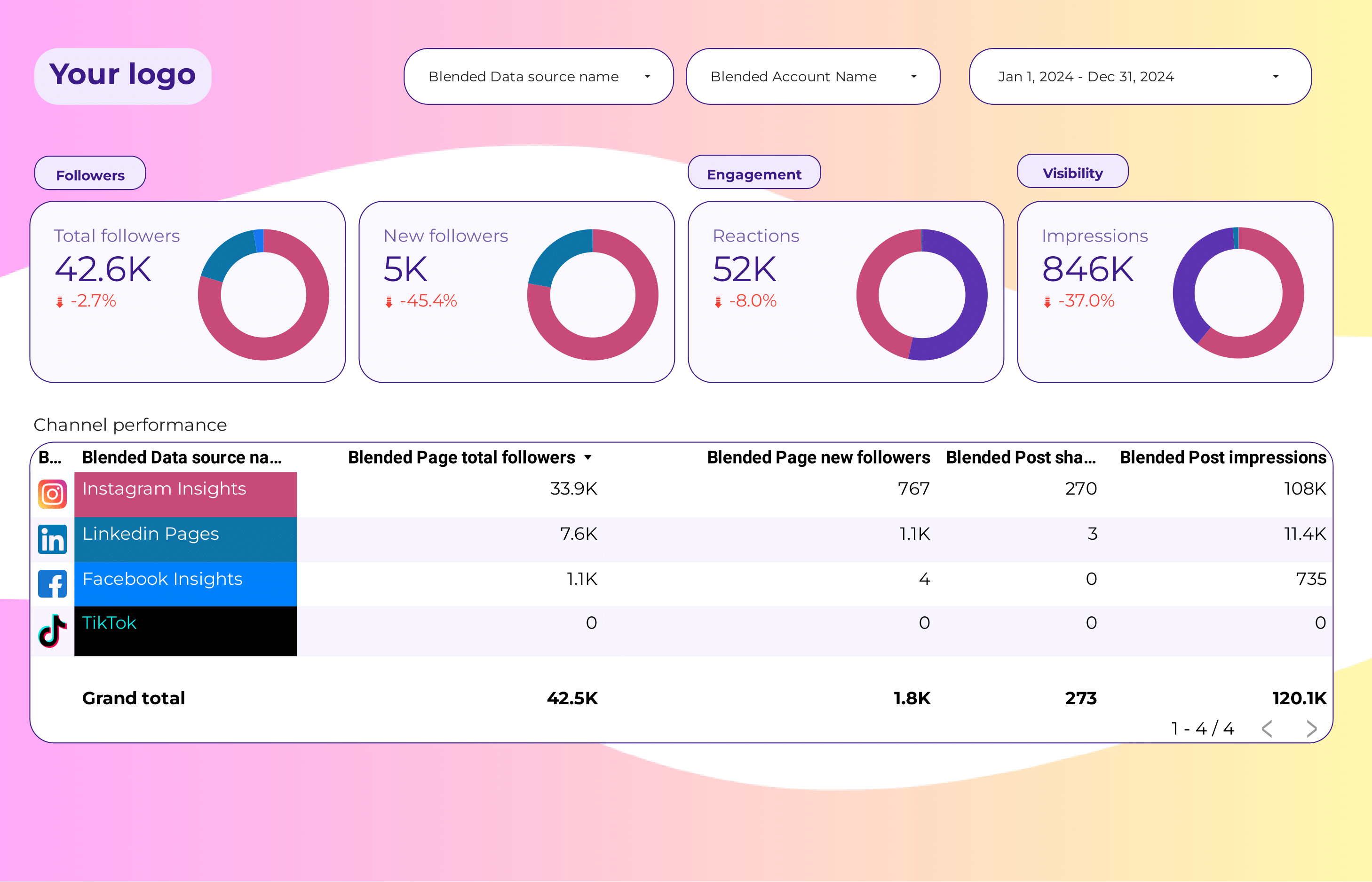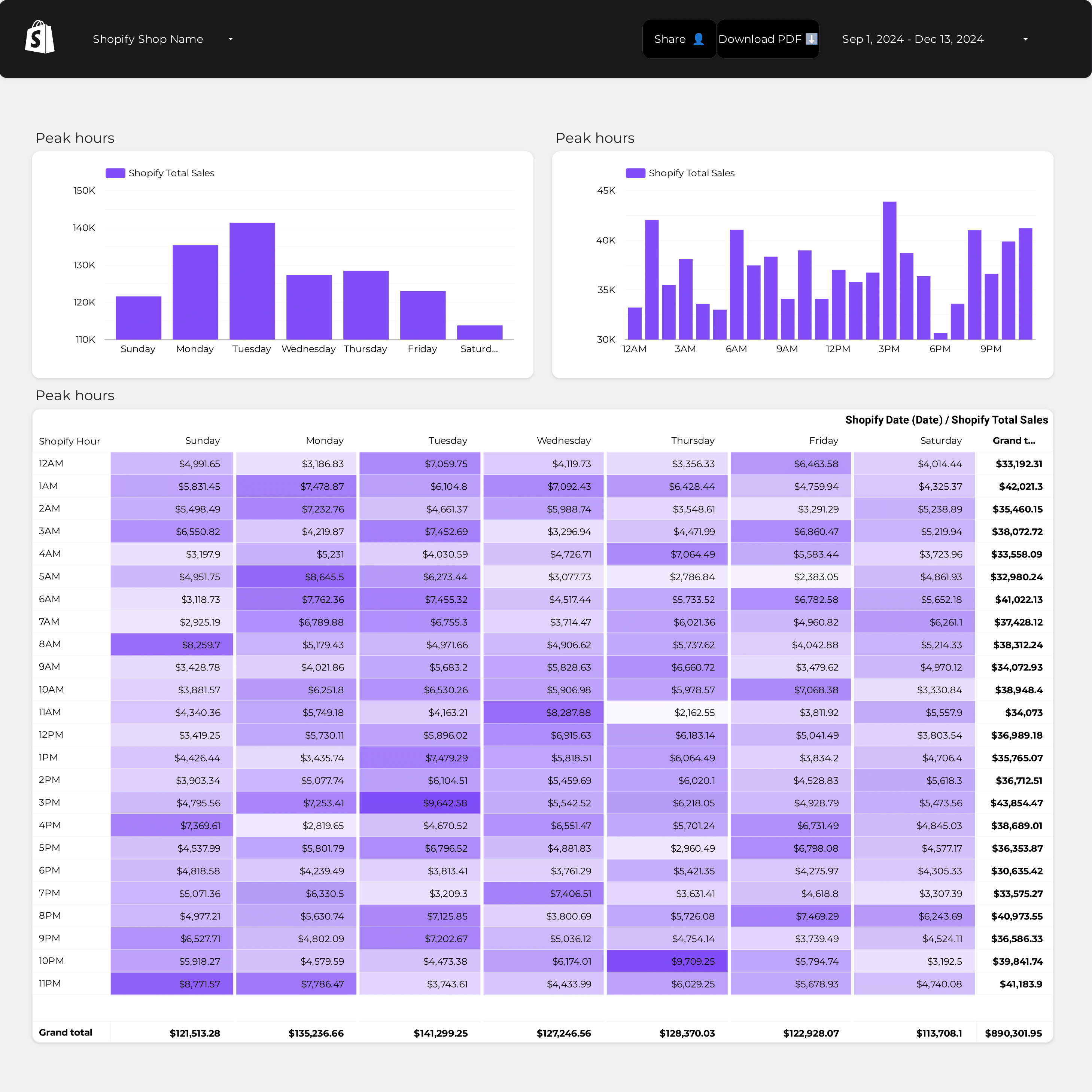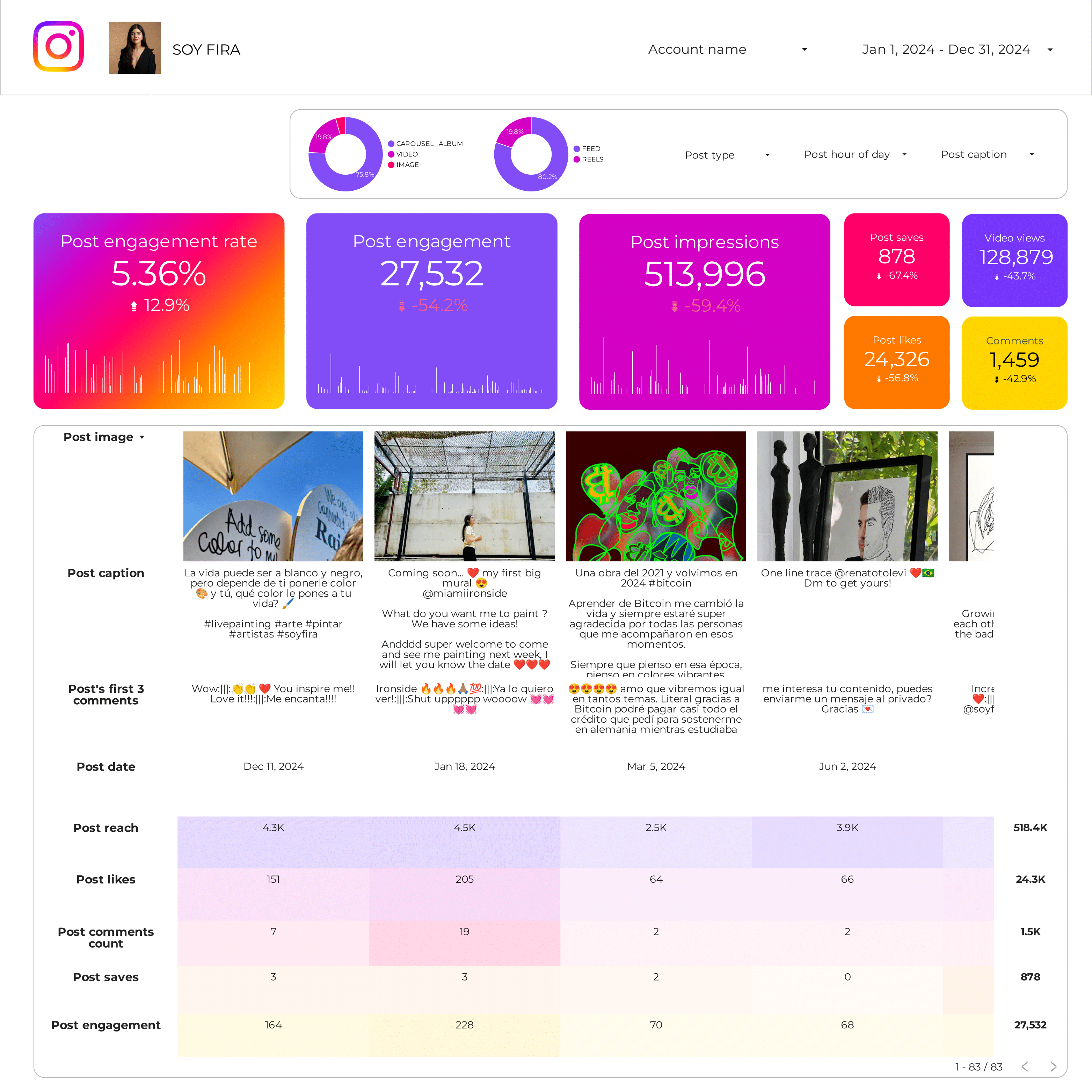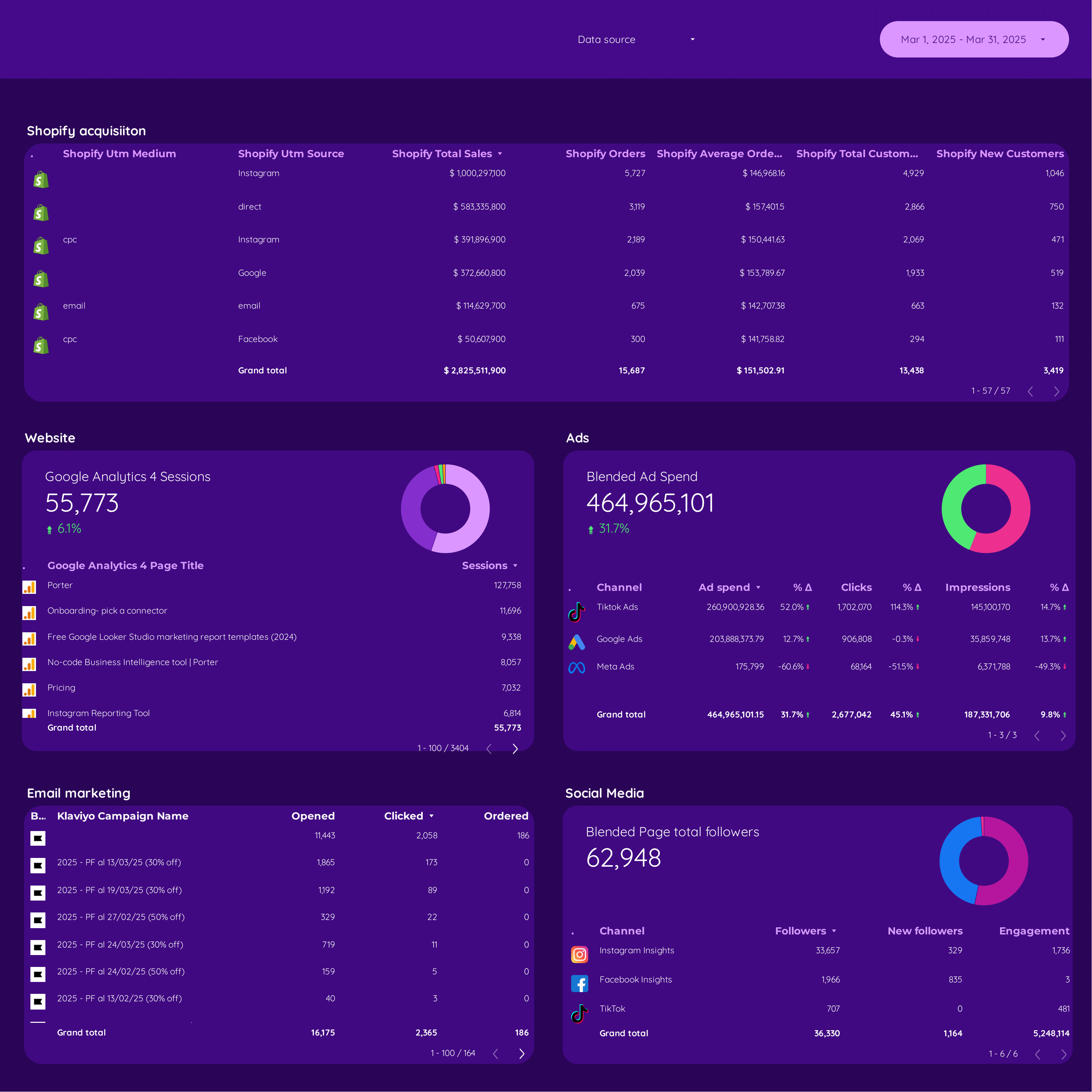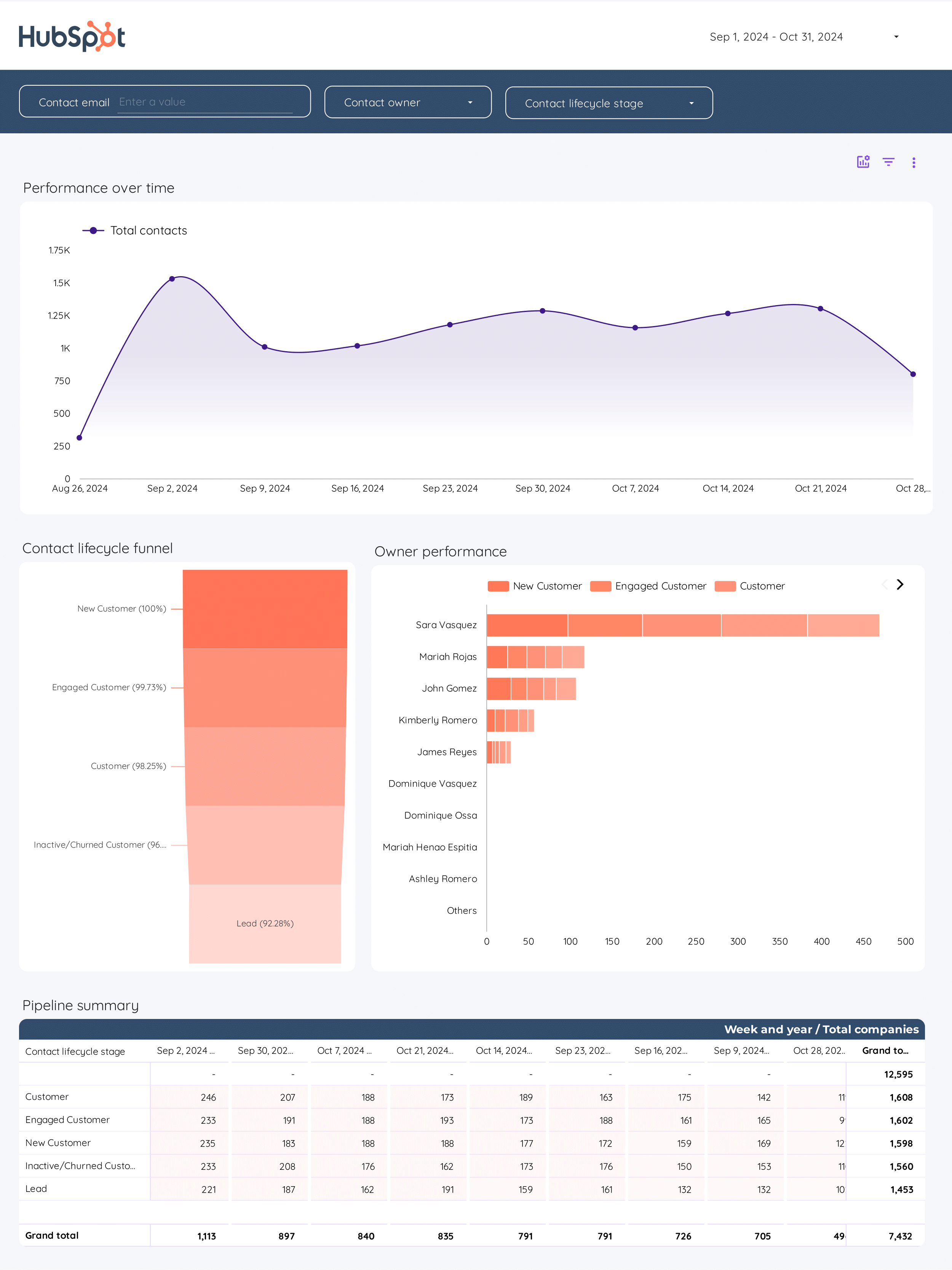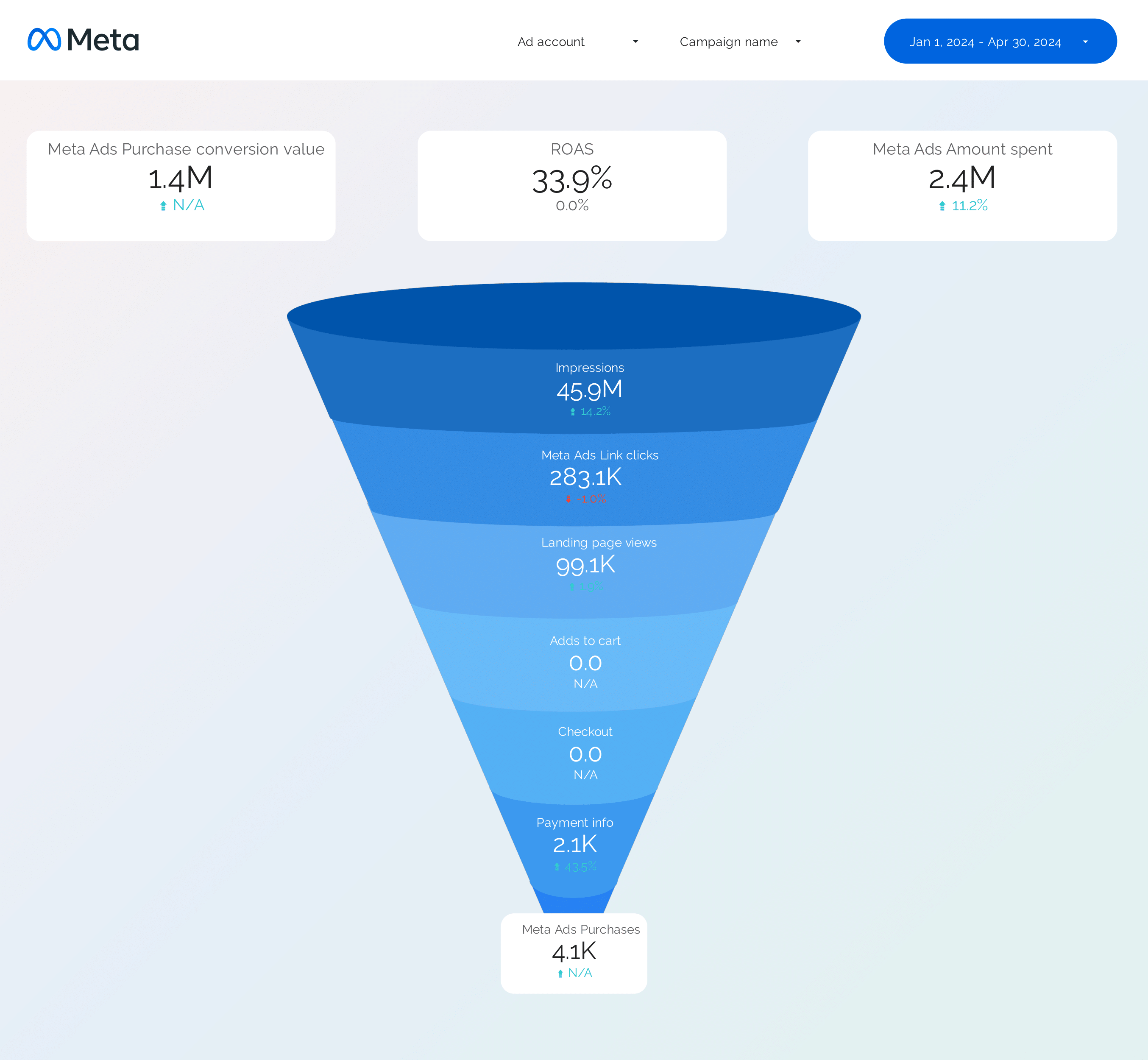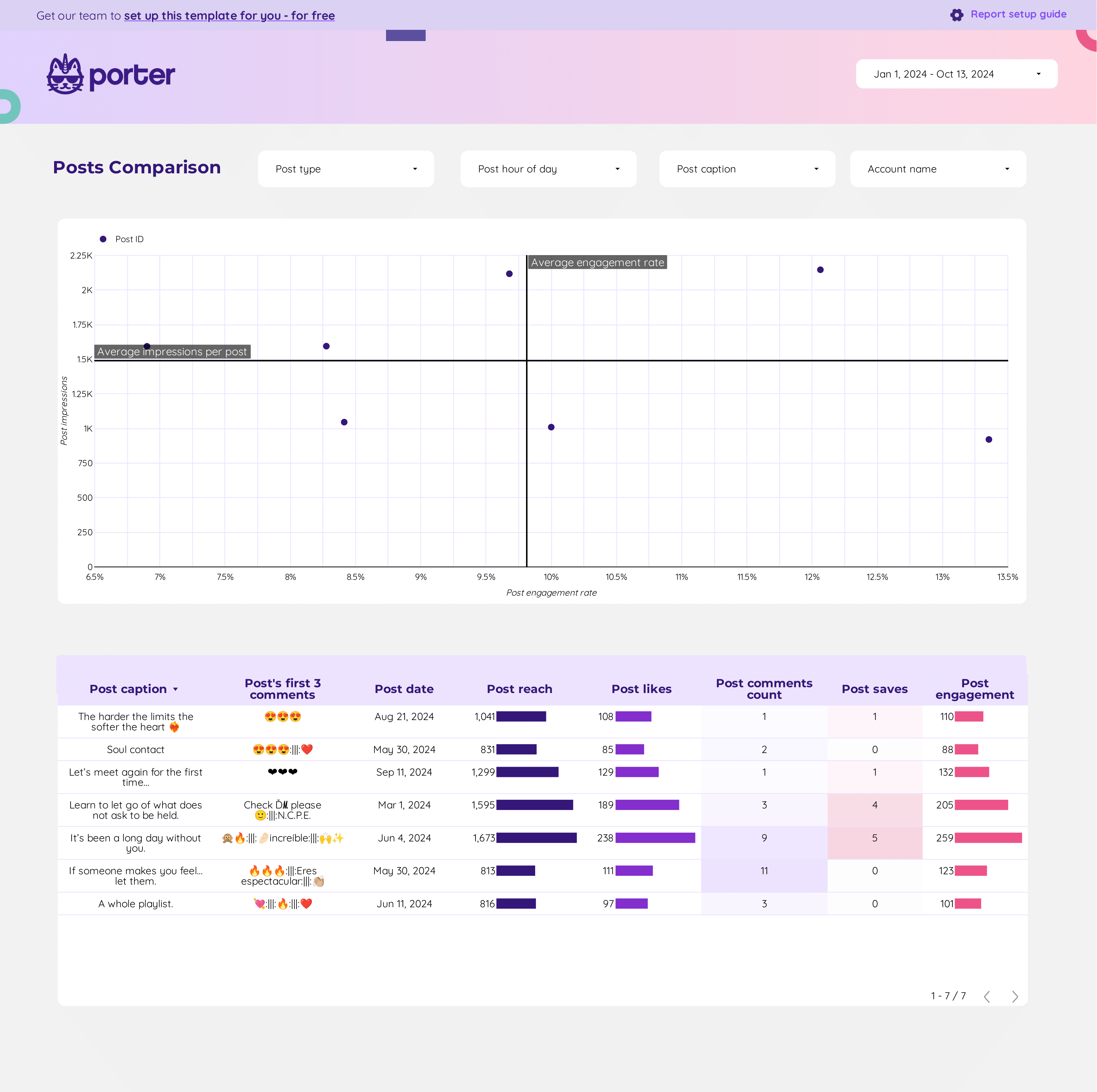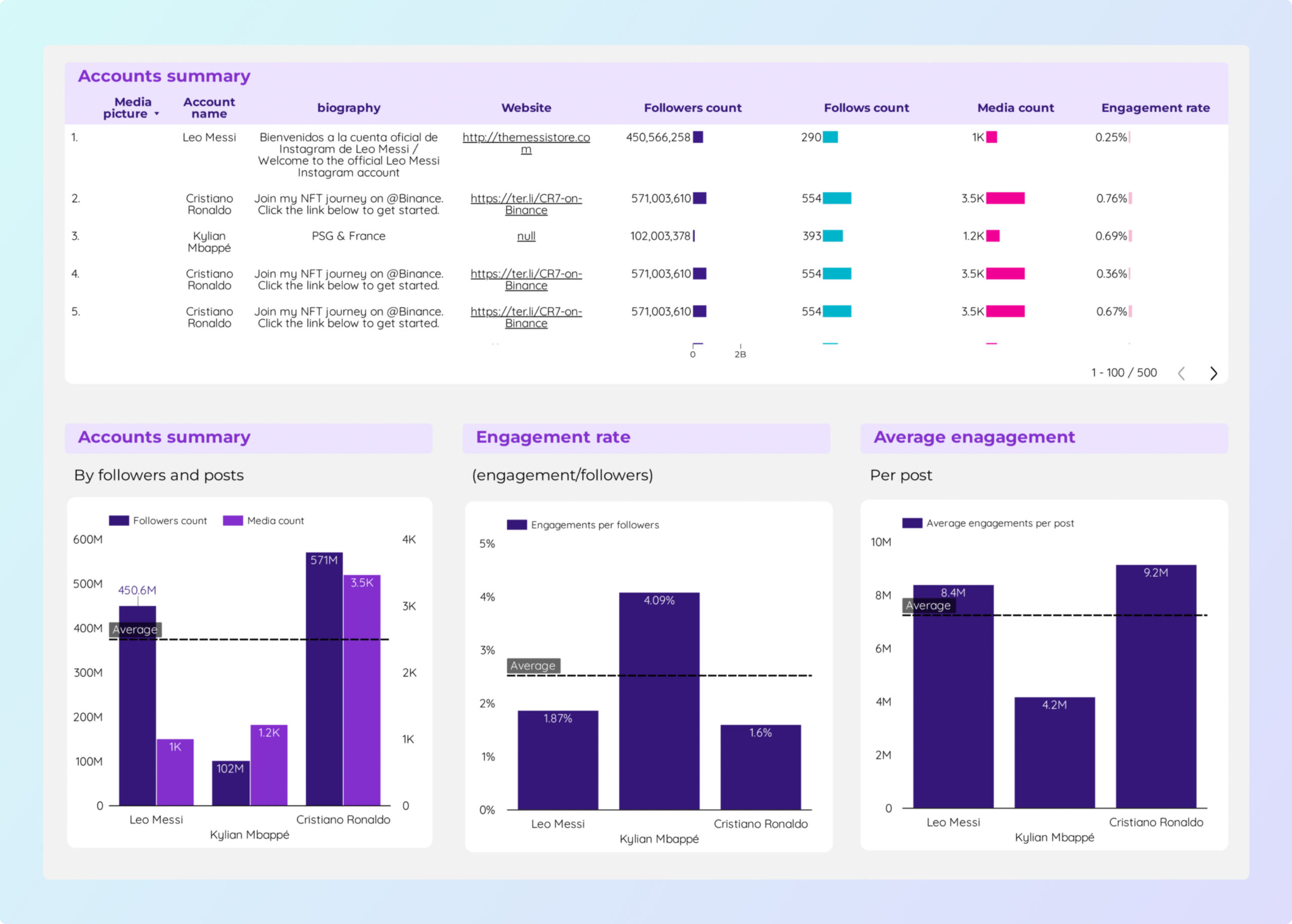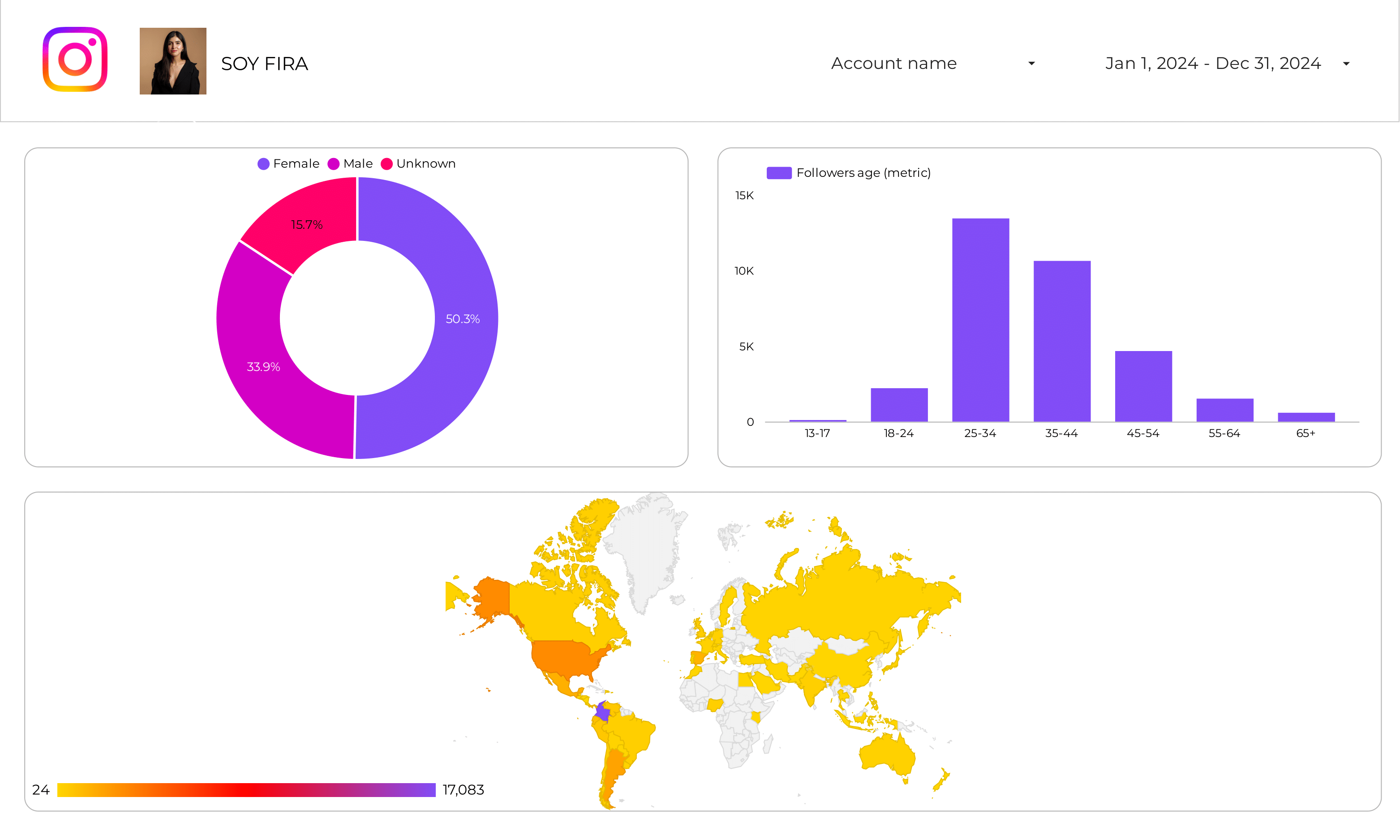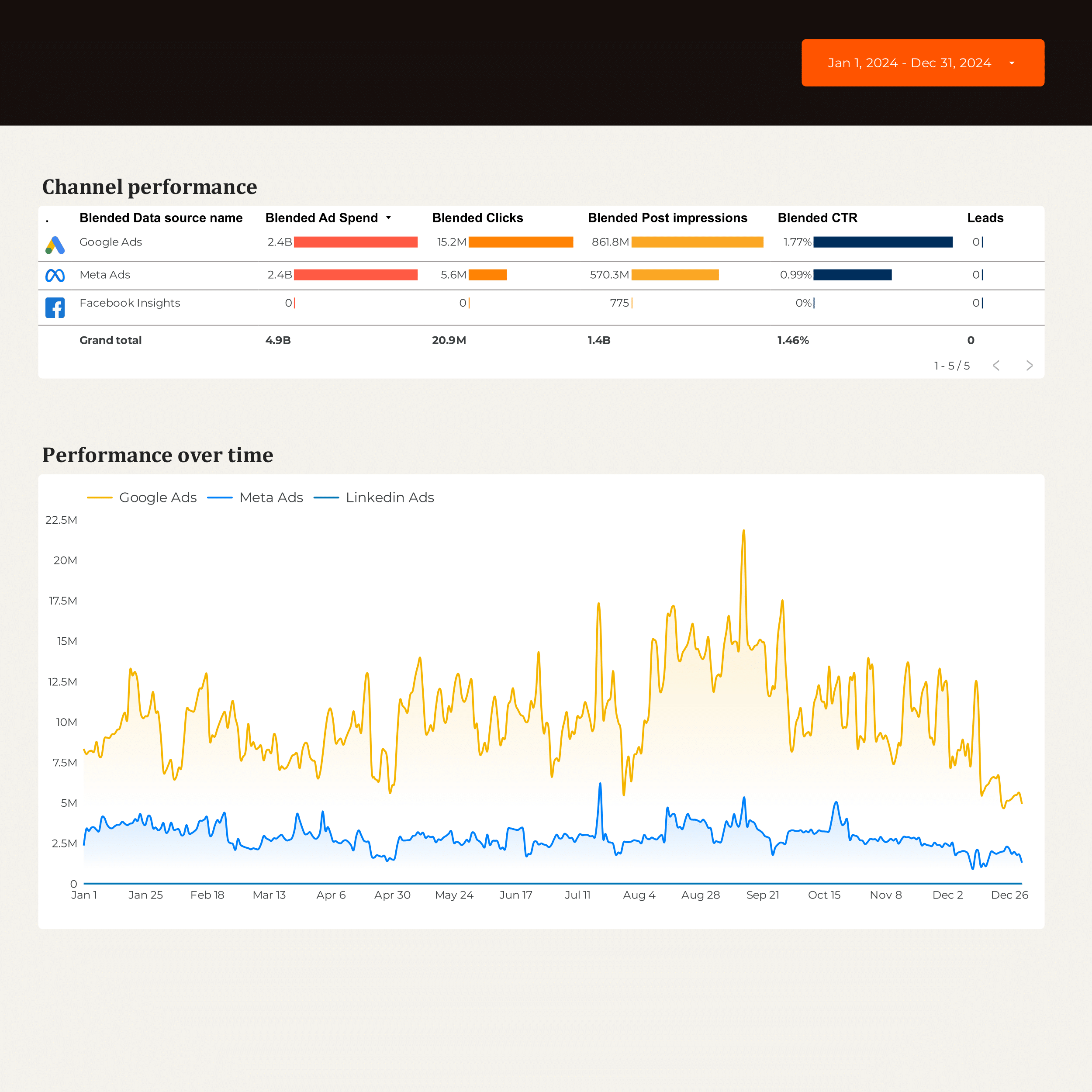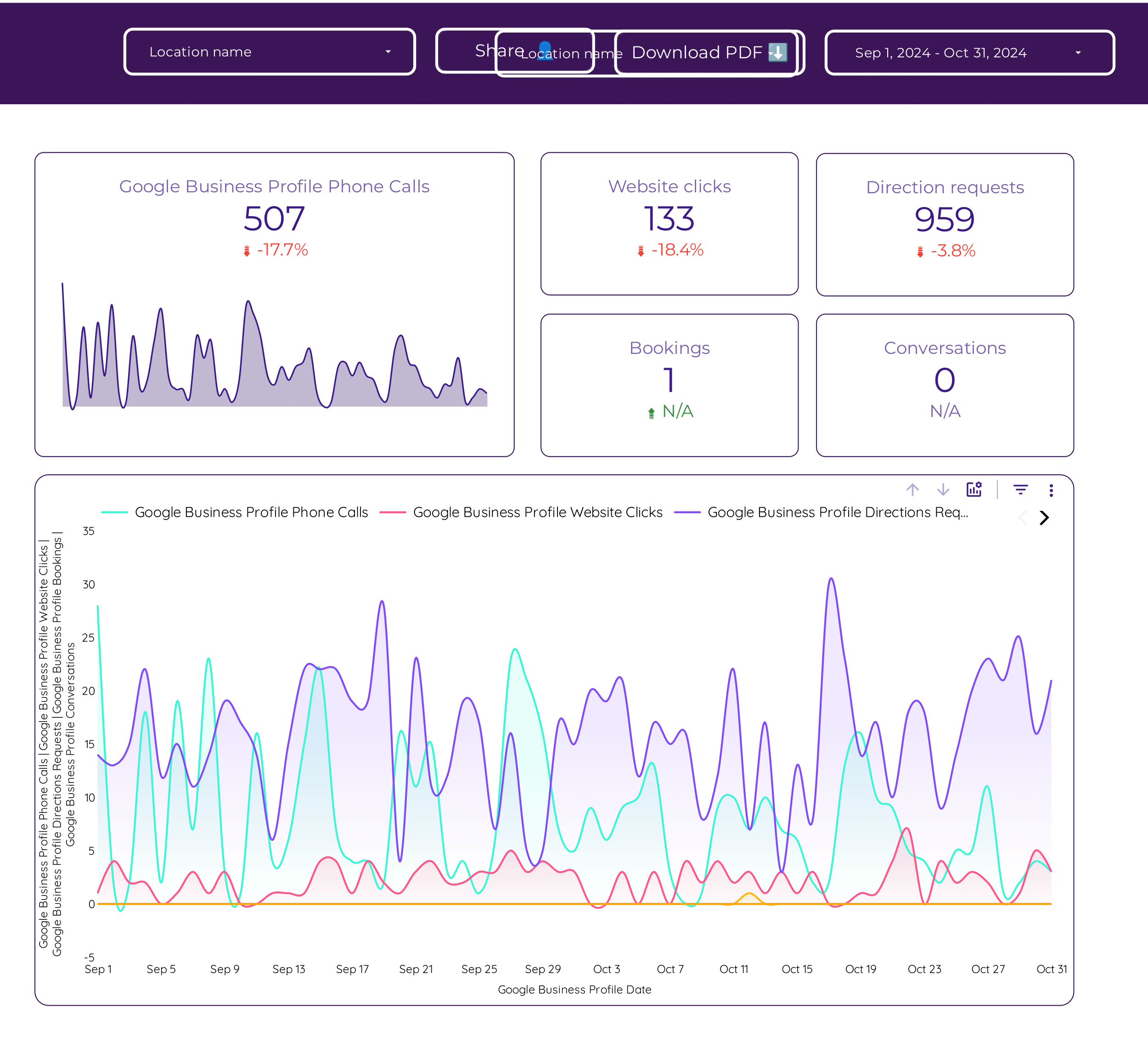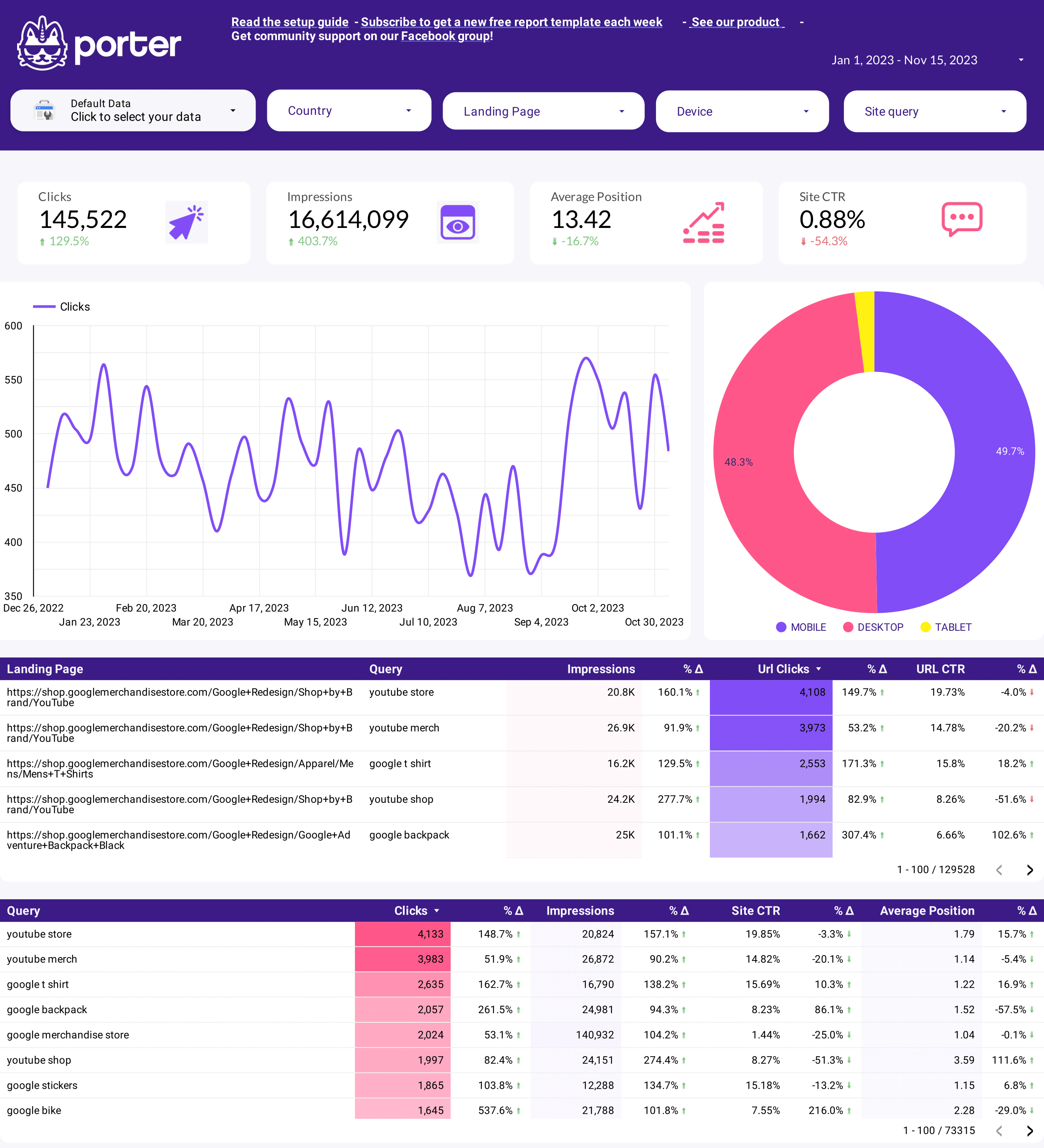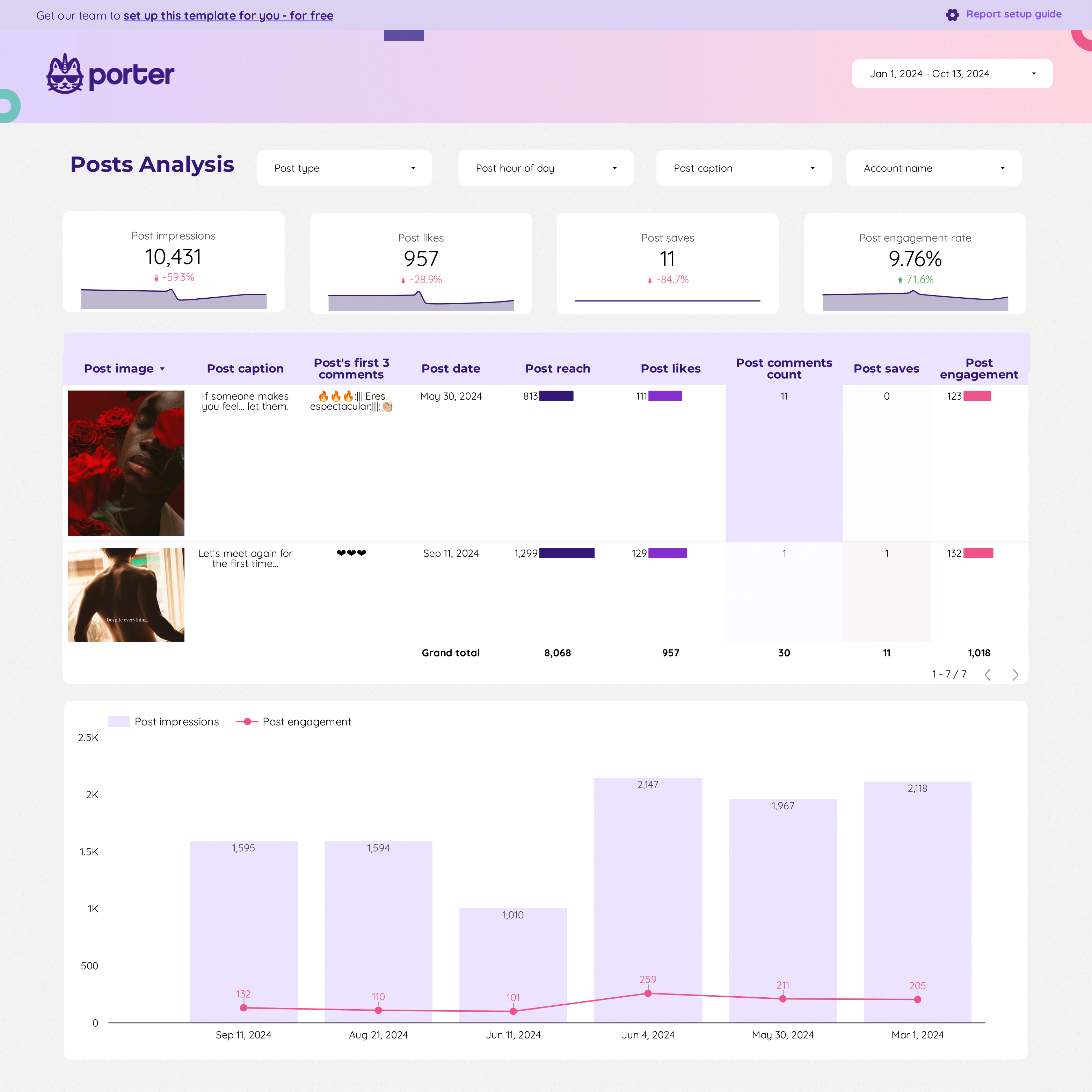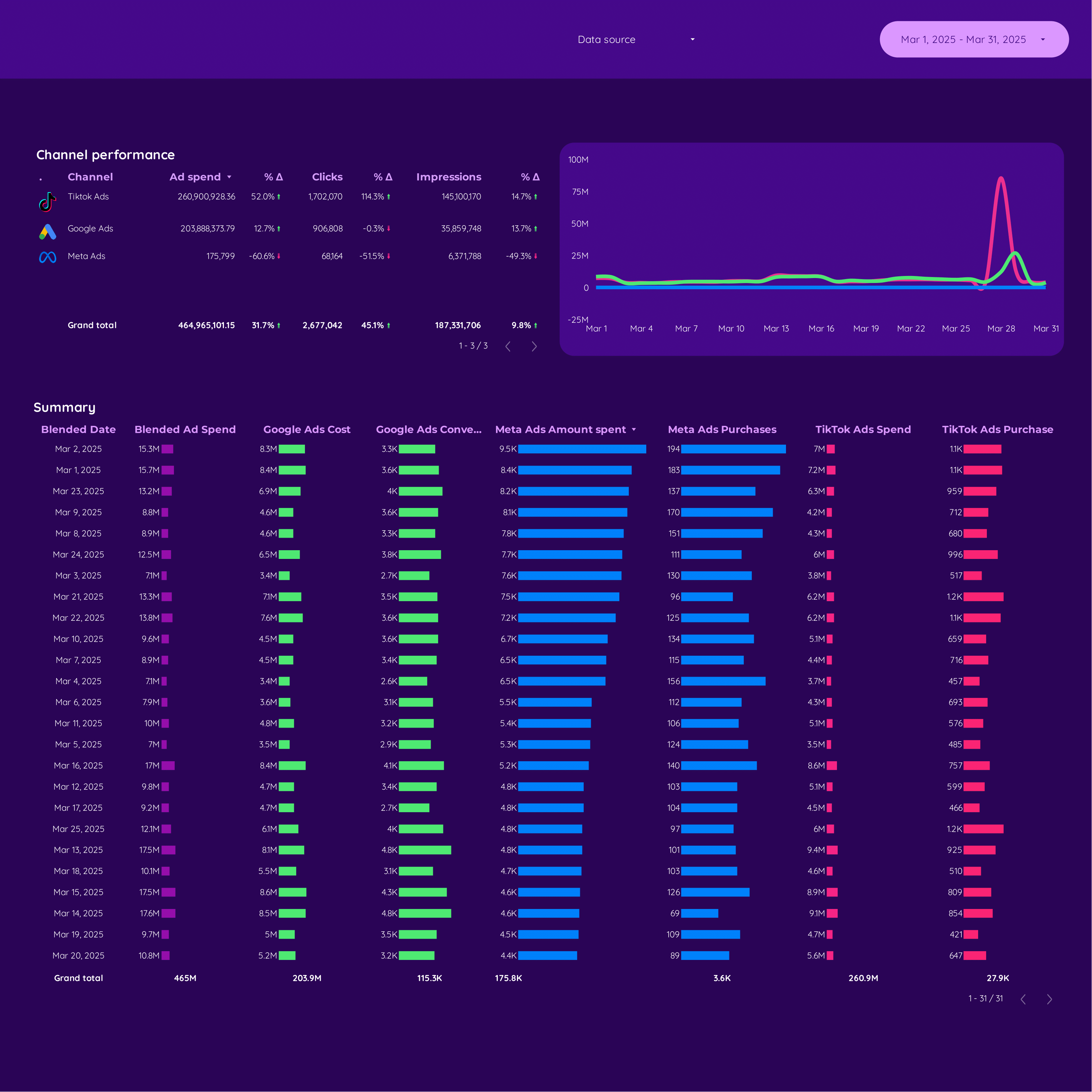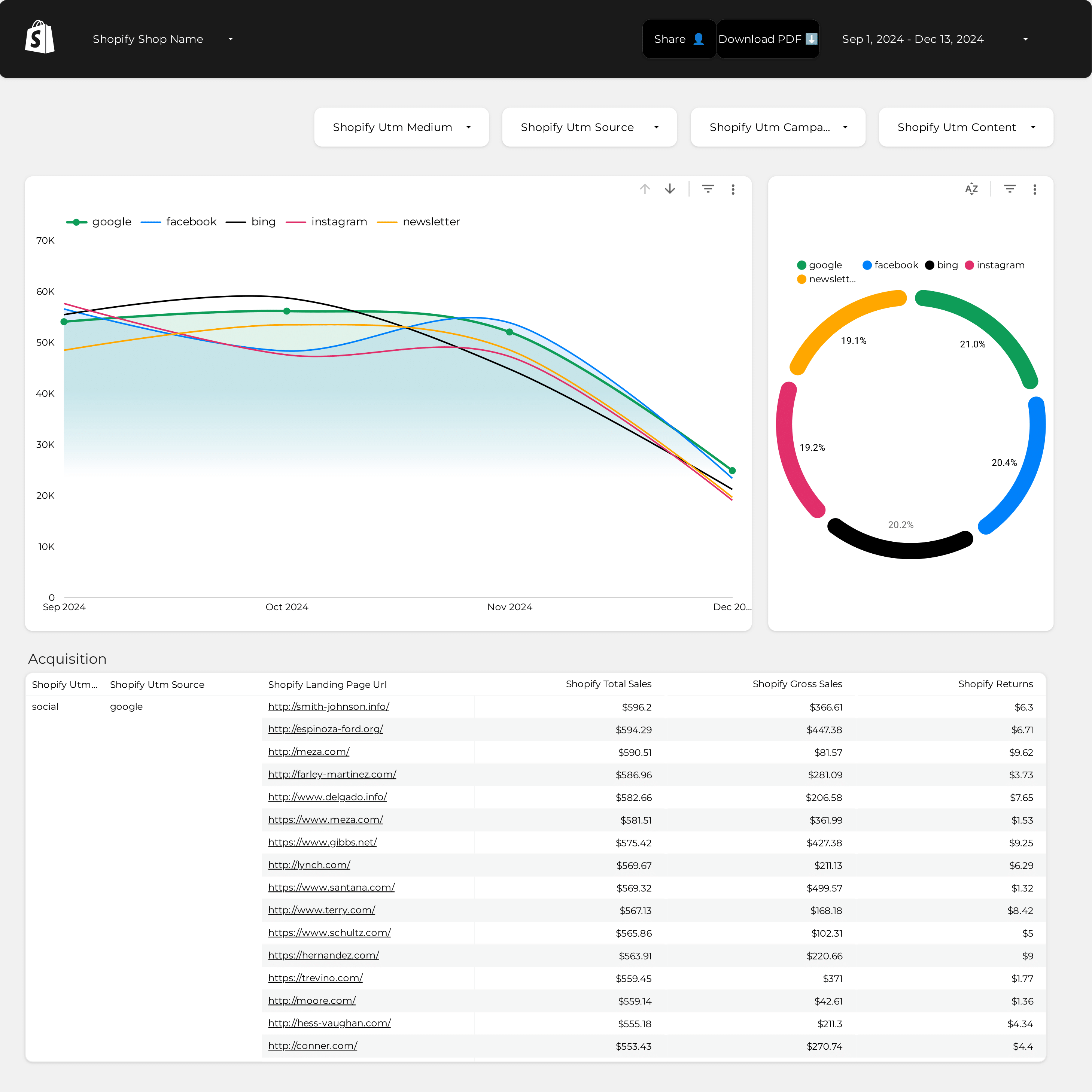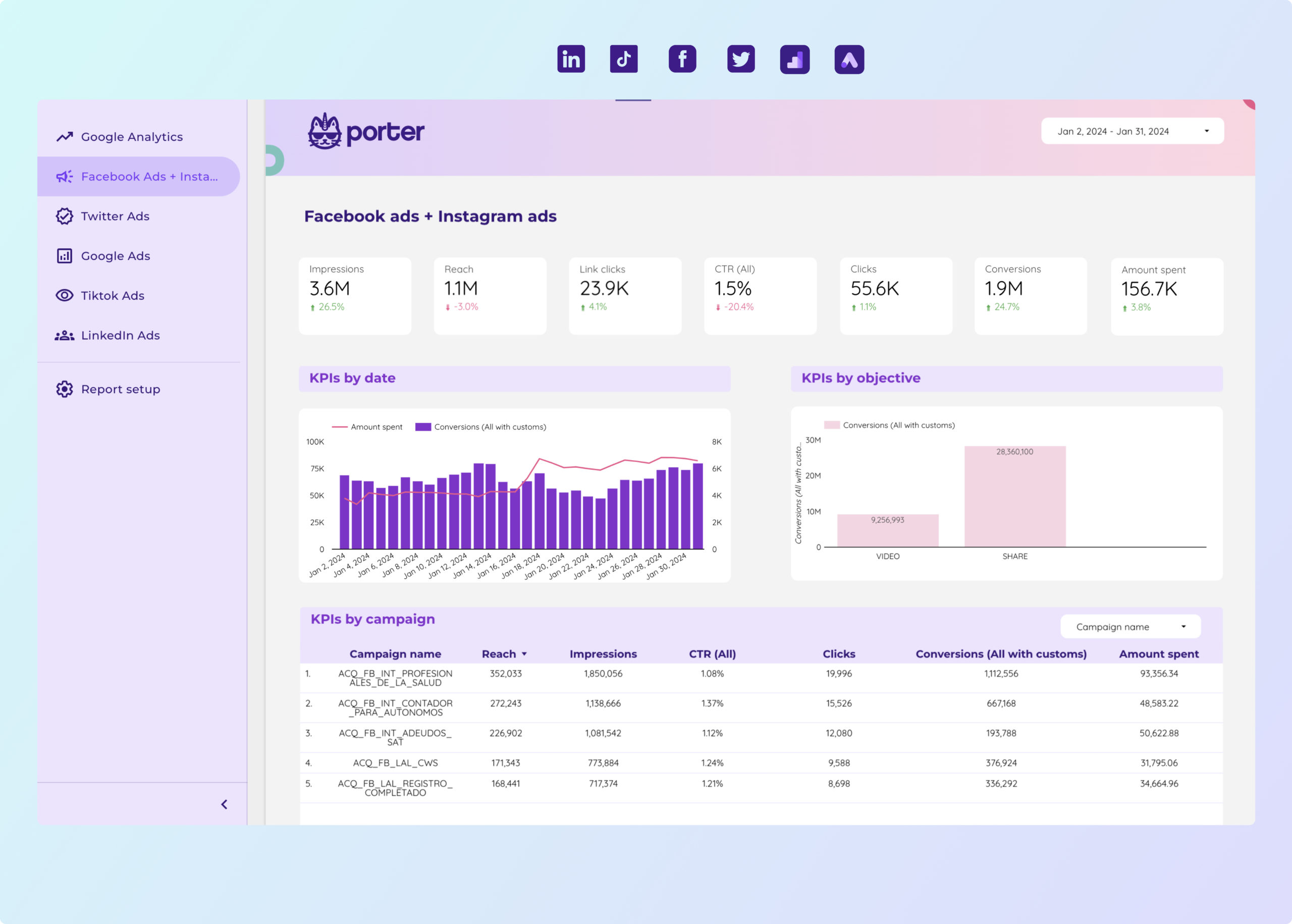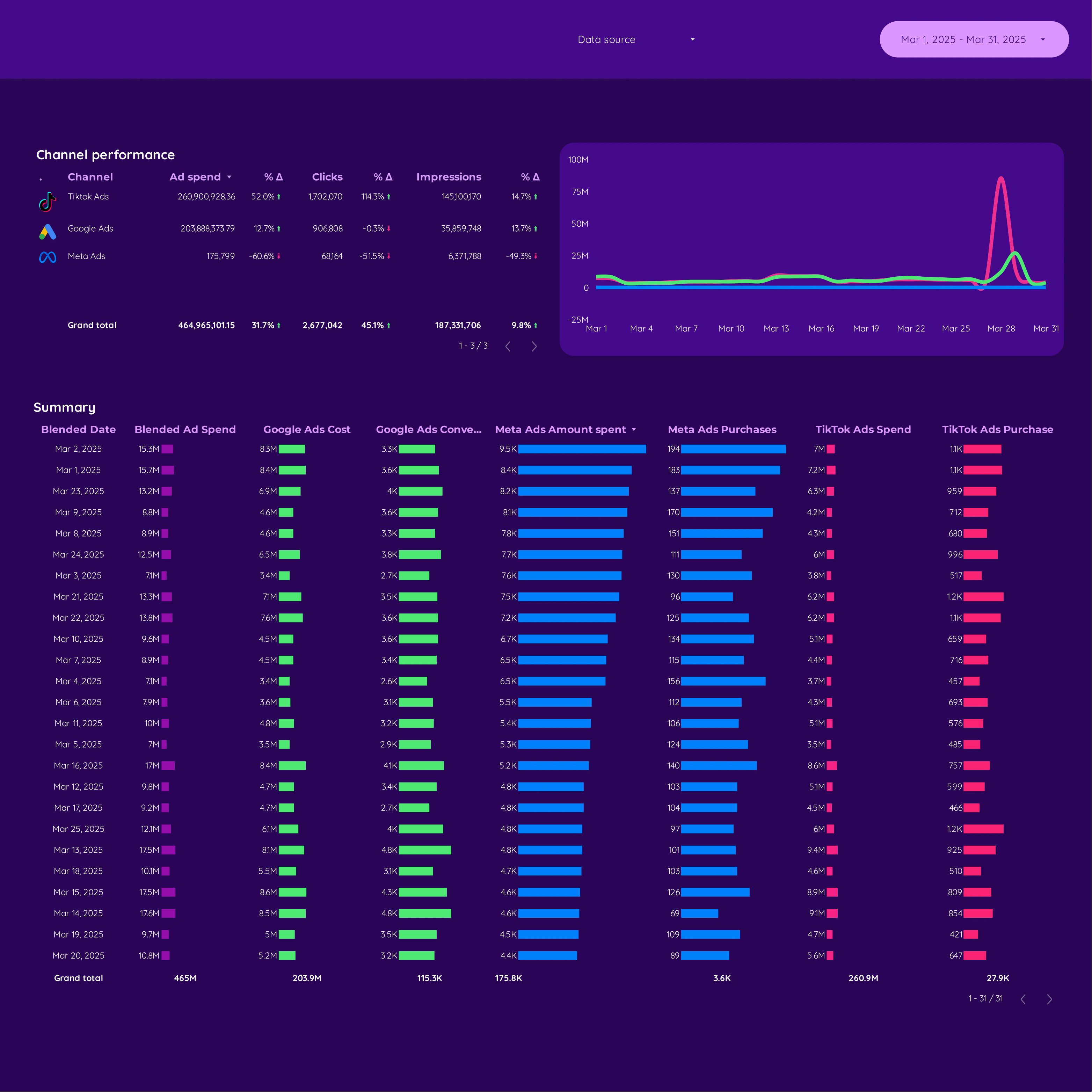
Cross-channel dashboard example
Track KPIs with the Cross-channel dashboard example. Consolidate data from PPC, E-commerce, and B2B platforms. Analyze Facebook Ads, Google Ads, LinkedIn Ads, and TikTok Ads performance. Designed for marketing teams to measure goals and refine strategies efficiently.
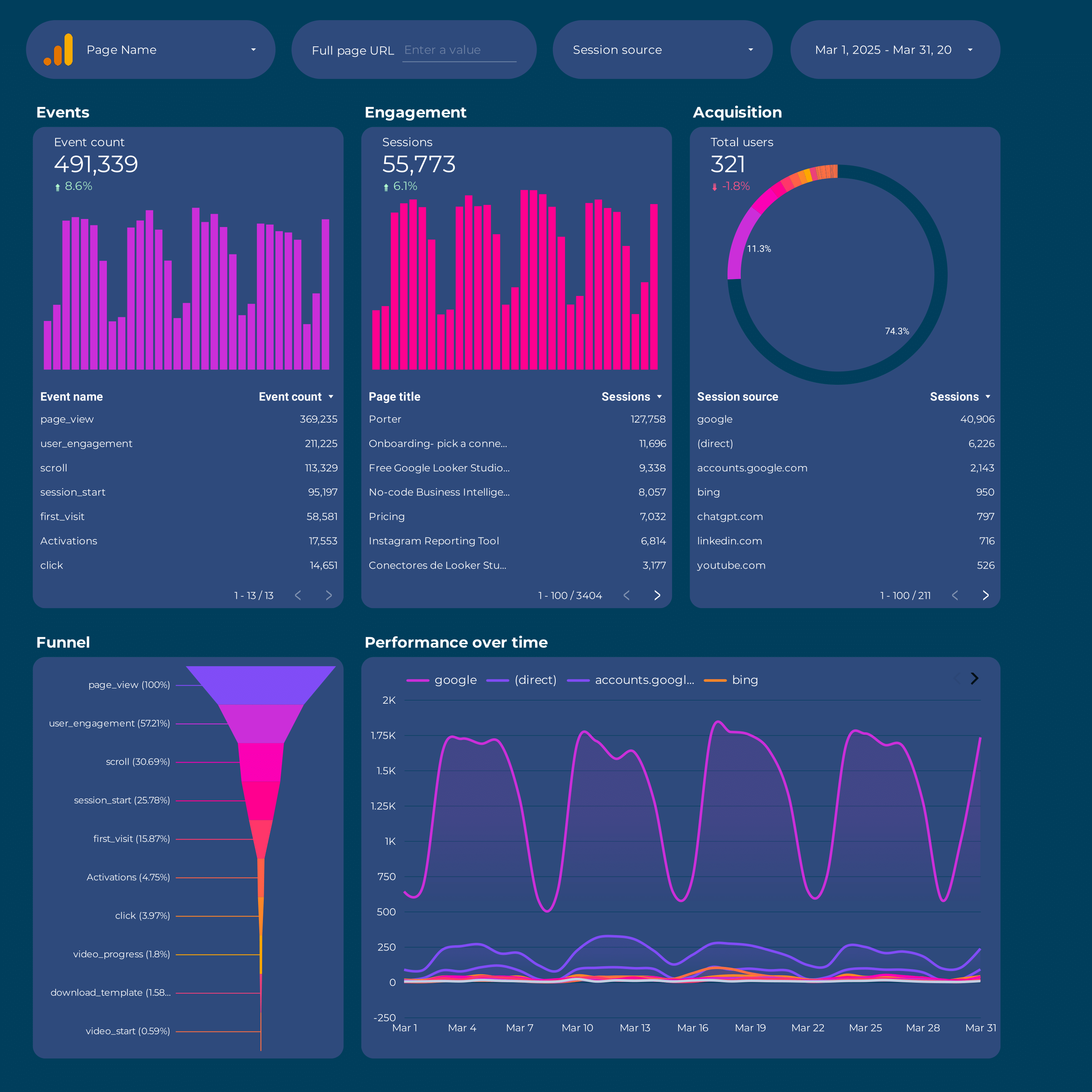
Google Analytics 4 dashboard example
Optimize your e-commerce strategy with this Google Analytics 4 dashboard example. Track conversion metrics, session duration, and bounce rate. Analyze impressions, CTR, and average position. Segment by campaign, age, gender, and device. View data by time intervals. Perfect for marketing teams to measure website performance and achieve specific objectives.
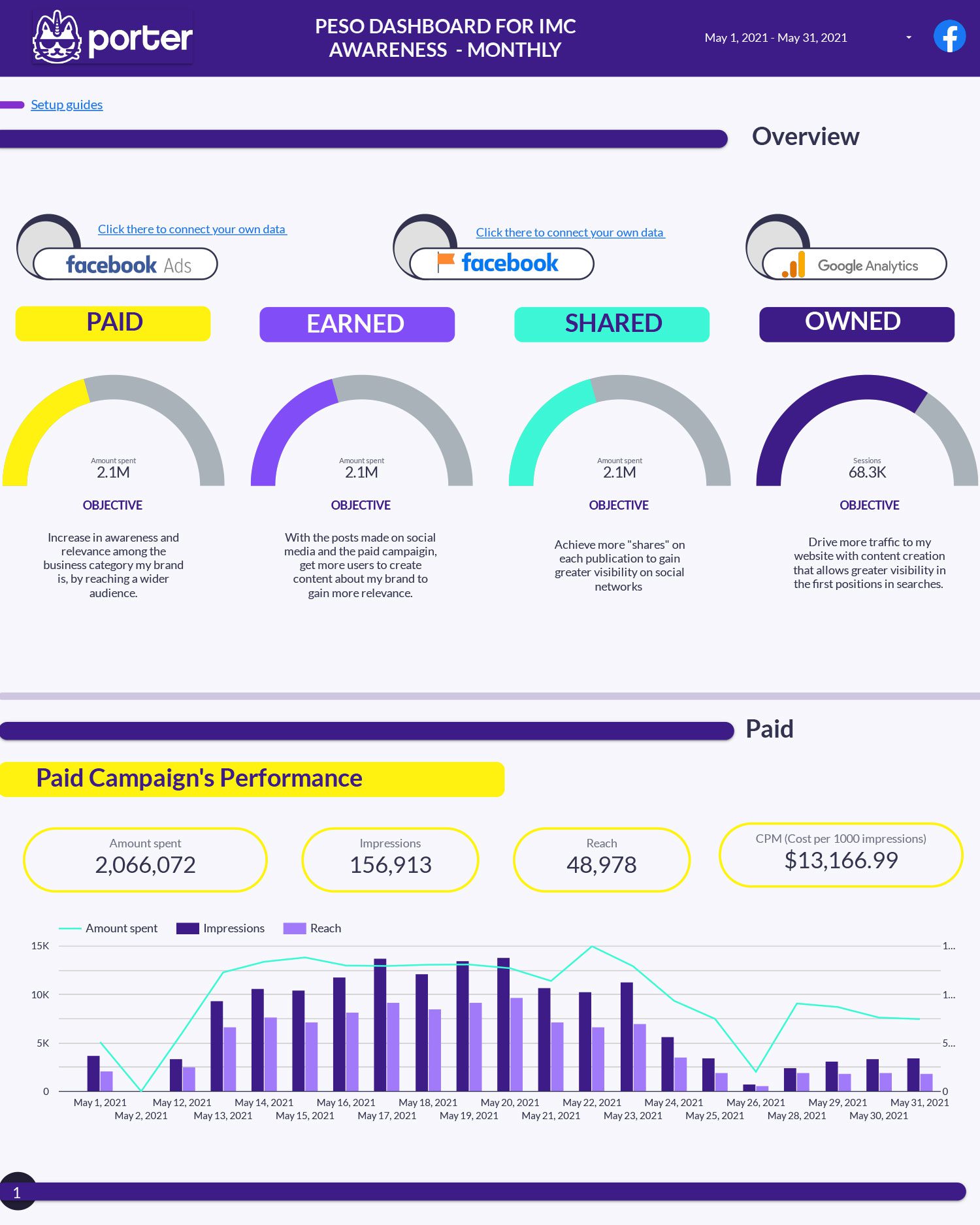
Peso model dashboard example
Analyze key metrics like leads, conversion rates, and engagement with this Peso model dashboard example. Track campaign performance across Facebook Ads and Instagram Insights. Segment by audience demographics and timeframes. Perfect for marketing teams to measure e-commerce and social media strategies efficiently.
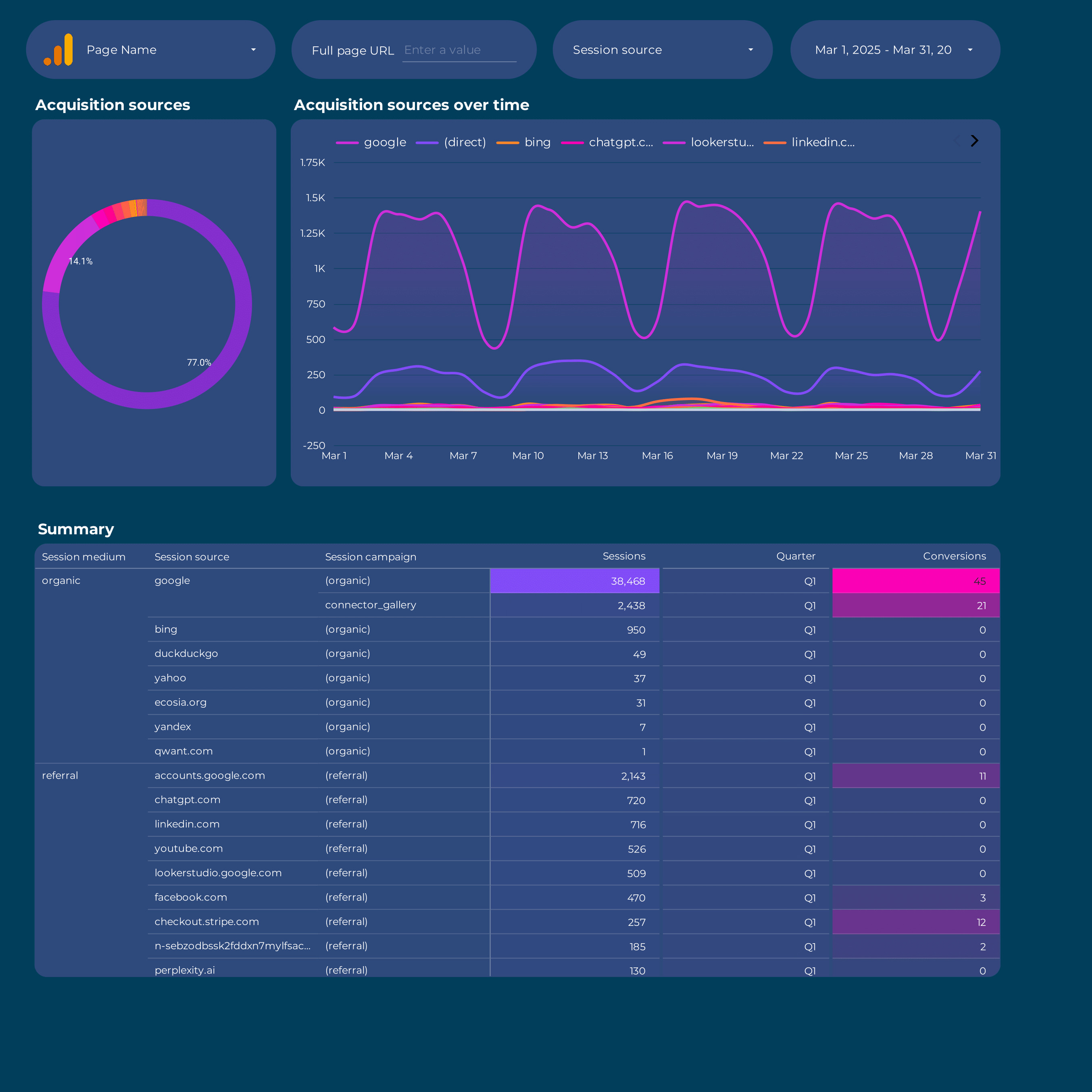
Acquisition dashboard example
This Acquisition dashboard example helps marketing teams track key metrics like conversion rate, ROI, and CTR. Analyze dimensions such as target audience and campaign goals. Integrate data from Google Analytics 4, Copy, and PPC. Ideal for measuring performance and aligning with specific marketing objectives.

A/B testing dashboard example
Optimize your strategy with this A/B testing dashboard example. Track metrics like conversion rate, CPA, and ROI. Analyze dimensions such as demographics and campaign message. Blend data from Email Marketing and Copy for actionable insights. Ideal for marketing teams to measure performance and achieve goals.

